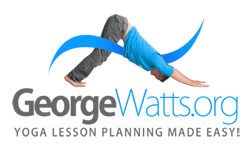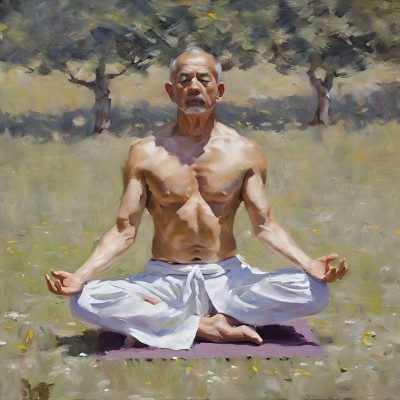How I Teach Eagle Pose (Garudasana) In My Yoga Classes The Right Brain Way
In this post, I’ll be sharing how I teach Eagle Pose by using eagle symbolism, and I’ve also included 30 modifications (beginner, intermediate and advanced).
If you’ve chosen Eagle pose as the peak yoga pose, you can use eagle symbolism to weave a theme into the yoga lesson plan.
Below are twenty words that symbolise becoming an eagle, when in Eagle pose.

Eagle Pose
20 Eagle Pose Symbolism Words: Pick One To Use As Your Class Theme
- Action
- Authority
- Community
- Command
- Control
- Determination
- Dominance
- Focus
- Freedom
- Guardianship
- Inspiration
- Judgment
- Liberation
- Masculinity
- Opportunity
- Power
- Protection
- Ruler
- Skill
- Vision
Use one of these seven Eagle Pose yoga class themes below in your next yoga lesson plan.
Pick One Of These 7 Eagle Peak Pose Themes To Use In Your Next Yoga Class
Below are seven yoga class themes you could morph into reality by having Eagle Pose as the peak yoga pose.
- Grounded by limitation: Not allowing the illusion of limitation to ground us in our flight.
- Don’t judge a book by its cover: in spite of its enormous size, the eagle still takes flight, seemingly effortlessly.
- Conserve resources (work smarter, not harder): Eagles are opportunistic. They’re skilled hunters, but they go about gaining their food in ways that are more efficient then hunting…eating what’s already been killed.
- Communication: As rulers of the sky, the eagle is connected with the air element, which symbolises communication.
- Streamlined: An eagle is streamlined, sleek and chiseled. Yoga helps the body to become streamlined, sleek and chiseled.
- Focused Change: The eagle teaches us to use our abilities in a laser-like fashion to bring about focused change in our lives.
- Fly Higher: Give yourself permission to fly higher.
Eagle Pose Teaching Steps: A Video Guide
Start in Mountain Pose.
Bend legs slightly.
Weight on left leg.
Lift right leg across left.
Fix gaze.
Stand steady.
Lift arms to shoulder height.
Take right arm across left.
Bend elbow.
Bring backs of hands together.
Brings palms together.
Release back to Mountain pose.
Top 10 Benefits Of Practising Eagle Pose
- Improves Balance: Enhances stability and coordination by challenging proprioception.
- Strengthens the Legs: Builds strength in the thighs, calves, and ankles.
- Increases Flexibility: Stretches the hips, shoulders, and upper back.
- Enhances Focus: Requires concentration, improving mental clarity and awareness.
- Opens the Shoulders: Relieves tension in the upper back and shoulders.
- Boosts Circulation: The compression and release action improves blood flow.
- Engages the Core: Strengthens abdominal muscles for better stability.
- Encourages Hip Mobility: Increases range of motion in the hip joints.
- Promotes Detoxification: Twisting and compression help stimulate the lymphatic system.
- Builds Mental Resilience: Holding the pose challenges patience, endurance, and mindfulness.
30 Modifications For Eagle Pose: Beginner, Intermediate & Advanced
Learning new modifications is essential for yoga teachers because it allows them to make yoga accessible and inclusive for students of all levels, abilities, and body types.
By understanding a variety of modifications, teachers can confidently adapt poses to support beginners, challenge advanced practitioners, and accommodate injuries or mobility limitations.
Offering modifications also encourages students to listen to their bodies, practice safely, and progress at their own pace. Ultimately, modifications enhances the overall class experience, making yoga more effective, enjoyable, and empowering for everyone.
Here are 30 modifications for Eagle pose…
10 Beginner Modifications for Eagle Pose (Garudasana)
Beginner Modification 1: Use a Wall for Balance
Stand near a wall and place one hand on it for support. This helps beginners build confidence in the pose while improving balance.
Beginner Modification 2: Keep Toes on the Ground
Instead of wrapping the lifted foot around the standing leg, rest the toes on the mat. This provides extra stability while still engaging the lower body.
Beginner Modification 3: Cross Legs Without Wrapping
Simply cross one leg over the other without wrapping the foot around the calf. This allows for a gentler introduction to the pose.
Beginner Modification 4: Sit on a Chair
Perform the pose while sitting on a chair, keeping the legs and arms crossed. This is ideal for students with limited mobility or balance issues.
Beginner Modification 5: Keep Arms Separate
Instead of intertwining the arms, simply cross them in front of the chest. This helps beginners ease into the upper body stretch.
Beginner Modification 6: Use a Strap for Arms
Hold a yoga strap between the hands instead of binding the arms. This allows students with tight shoulders to experience the stretch comfortably.
Beginner Modification 7: Widen the Stance
Keep the feet slightly further apart before crossing the legs. This provides more stability and makes the pose easier to hold.
Beginner Modification 8: Practice Arms and Legs Separately
Focus on just the arms or legs instead of both at the same time. This helps build strength and familiarity with each movement before combining them.
Beginner Modification 9: Reduce Knee Bend
Keep the standing leg more extended with only a slight bend. This reduces strain on the knee while still engaging the lower body.
Beginner Modification 10: Hold the Pose for a Shorter Time
Encourage beginners to hold the pose for just a few breaths. Gradually increasing hold time builds endurance and stability.
10 Intermediate Modifications for Eagle Pose (Garudasana)
Intermediate Modifications for Eagle Pose (Garudasana)
Intermediate Modification 1: Deepen the Knee Bend
Lower into a deeper squat while maintaining balance. This intensifies leg engagement and strengthens the lower body.
Intermediate Modification 2: Full Leg Wrap
Work on fully wrapping the lifted foot behind the standing leg’s calf. This increases balance and flexibility in the lower body.
Intermediate Modification 3: Engage the Core More
Actively pull the navel toward the spine to enhance stability. This helps with balance and creates a more controlled pose.
Intermediate Modification 4: Eyes Closed Variation
Try holding the pose with eyes closed to challenge proprioception. This improves balance and body awareness.
Intermediate Modification 5: Extend the Arms Forward
Instead of keeping the elbows at chest level, extend the arms forward. This intensifies the shoulder stretch and engages the upper body.
Intermediate Modification 6: Use a Block Under the Foot
Place a yoga block under the toes of the lifted foot. This helps maintain alignment while still building strength in the standing leg.
Intermediate Modification 7: Add a Twist
After holding the pose, gently twist the torso to one side. This adds an extra spinal rotation for increased mobility.
Intermediate Modification 8: Hold for a Longer Time
Increase the hold time to 30–60 seconds per side. This challenges endurance and improves muscular strength.
Intermediate Modification 9: Arm Lift Variation
Slowly lift the arms overhead while keeping them intertwined. This deepens the stretch in the upper back and shoulders.
Intermediate Modification 10: Move from Side to Side
Gently shift weight from one foot to the other while maintaining the pose. This adds an element of dynamic movement to improve balance.
10 Advanced Modifications for Eagle Pose (Garudasana)
Advanced Modifications for Eagle Pose (Garudasana)
Advanced Modification 1: Lift the Heel of the Standing Foot
Rise onto the ball of the standing foot while maintaining the pose. This increases the balance challenge and strengthens the calves.
Advanced Modification 2: Add a Forward Fold
Hinge at the hips and fold forward while keeping the arms and legs bound. This intensifies the stretch in the upper back and legs.
Advanced Modification 3: Eagle Pose to Warrior III Transition
Unwrap the legs and extend the lifted leg straight back into Warrior III. This builds strength, control, and fluidity in movement.
Advanced Modification 4: Move into a Revolved Eagle Twist
After holding the pose, twist the torso to the side while keeping the arms and legs wrapped. This engages the obliques and deepens the spinal stretch.
Advanced Modification 5: Perform on an Unstable Surface
Practice Eagle Pose on a yoga block or a balance cushion. This drastically increases the challenge and enhances core engagement.
Advanced Modification 6: Add a Side Bend
While holding the pose, gently lean to one side. This engages the side body and adds an extra element of flexibility.
Advanced Modification 7: Hold for Over a Minute
Increase the hold time to 60–90 seconds per side. This builds exceptional endurance and mental focus.
Advanced Modification 8: Transition to Chair Pose
Unwind the arms and legs directly into Chair Pose (Utkatasana). This strengthens the transition between postures and enhances lower body engagement.
Advanced Modification 9: Extend the Arms Overhead
Slowly lift the bound arms toward the ceiling. This intensifies the shoulder stretch and adds an additional balance challenge.
Advanced Modification 10: Close the Eyes and Breathe Deeply
Hold the pose with eyes closed and slow, controlled breathing. This challenges stability, concentration, and body awareness on a deeper level.








